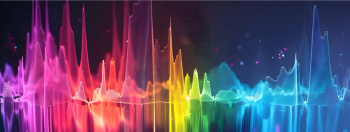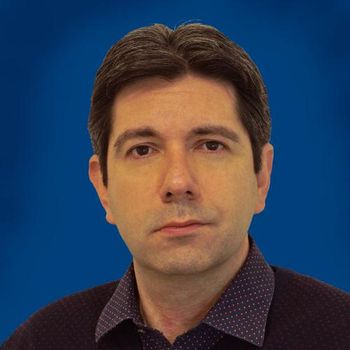
New York–New Jersey Society for Applied Spectroscopy Celebrates Student Award Winners
On July 13, 2019, from 5 pm to 8 pm, the New York–New Jersey Society for Applied Spectroscopy (SAS) organization celebrated their student award winners at its annual banquet, held at Rutgers State University in the new Chemistry and Chemical Biology building in Piscataway, New Jersey. This year the group celebrated the accomplishments of three winners.
On July 13, 2019, from 5 pm to 8 pm, the New York–New Jersey Society for Applied Spectroscopy (SAS) organization celebrated their student award winners at its annual banquet, held at Rutgers State University in the new Chemistry and Chemical Biology building in Piscataway, New Jersey. This year the group celebrated the accomplishments of three winners.
The Graduate Award was presented to Jing Li of SUNY Binghamton, whose advisor is Chemistry Professor C. J. Zhong. Li’s research is focused on surface-enhanced Raman spectroscopy for the detection of cancer biomarkers by using functionalized nanomaterials. Some of her work, including the testing and evaluation of magnetic nanomaterials, and the development of a lung cancer breath sensor prototype by Lilly, have generated interest from industry.
Mike Cutrera presenting the Graduate Award to Jing Li of SUNY Binghamton.
One of two Undergraduate Award winners was Philip Charles of Rensselaer Polytechnic Institute, whose advisor is Chemistry and Chemical Biology Professor K. V. Lakshmi. Charles’s research is focused on elucidating the mechanism of light-driven charge transfer reactions in photosynthetic reaction centers. This research is unique, as Charles is exploiting the diverse potentials of advanced pulsed electron paramagnetic resonance (EPR) spectroscopy and quantum mechanics calculations to interrogate the molecular interactions of redox cofactors in vivo.
Mike Cutrera presenting one of the Undergraduate Awards to Philip Charles of Rensselaer Polytechnic Institute.
Alexander Green of SUNY Fredonia, whose advisor is Assistant Chemistry and Biochemistry Professor Allan Jay P. Cardenas, also won an Undergraduate Award. Using ultraviolet-visible light spectroscopy, Green was able to perform a kinetics study and propose a mechanism of the decomposition of a novel nitrosamine in producing nitroxyl and nitric oxide, which are both biologically and pharmacologically important molecules.
The event featured entertainment by Josh Mark, a local guitarist and singer who sang contemporary rock tunes throughout the dinner portion of the meeting. A raffle was held midway through the event, where a number of custom NYSAS USB drives and a power quality filter (surge protector), donated by ZeroSurge Inc., were raffled off. The students brought posters of their work, and there was plenty of opportunity for attendees to network with the students and guests.
Josh Mark, a local guitarist, provided entertainment during the dinner.
Jim Minadeo, President of Zero Surge Inc., donated one of their 8R15W power quality filters ( surge protectors) and Fran Adar of Horiba was the raffle winner.
Debbie Peru, the event’s master of ceremonies, recognized the officers for their time and commitment to the organization. Mike Cutrera, the student award committee chair and principal and leader of MITER Group, LLC, presented the students with a plaque and cash award.
Debbie Peru, left, recognized NYSAS officers for their work, including Howard Mark, the treasurer (shown here), Dana Garcia, chair elect, Mike Cutrera, the student award committee chair, and Gene Hall, the past president and student award celebration host.
More information about the SAS organization, the annual student awards, and a schedule of meetings and events can be found on the chapter’s website
Newsletter
Get essential updates on the latest spectroscopy technologies, regulatory standards, and best practices—subscribe today to Spectroscopy.





